
ABSTRACT. Central Brasil is one of the four centers of diversity of Manihot species. Of 26 wild Manihot species reported to occur in this region, 20 were collected from two limited areas, each less than 100 km in diameter. These two areas are Goiás Velho and Corumbá de Goiás. Considering the Harlan concept of geographic patterns of variation of cultivated crops, it is assumed that the two areas are microcenters of cassava diversity. Topographic, soil and ethnological data of these species were collected and compared. Key words: Manihot, Wild species, Useful genes INTRODUCTION Since the exposition of the Vavilov theory on centers of diversity in 1926, many inquiries have arisen that still receive attention from plant breeders. Vavilov (1951) explained the distribution patterns of variation in cultivated crops, assuming that the area of maximum diversity of a given crop is its place of origin. Initially, he postulated the existence of six main geographic centers for cultivated plants all over the world; later, in 1936, he increased them to 10. One of the several puzzling problems in Vavilov’s theory is that various cultivated crops have their centers of diversity far from these 10 defined centers. Examples include sorghum, yam and many others. Harlan (1971), in a series of papers, explained that centers of diversity for a given crop may occur far from its center of origin. He also showed that domestication of some crops had taken place far away from these limited determined centers; moreover, it happened along a vast area, something that cannot be called a “center”. Harlan called them “noncenters”. In the case of these noncenters there is neither evidence for a center within which agriculture originated nor for the kind of center described by Vavilov. In centers of diversity, different from the so-called noncenters, it is common for a crop to show enormous diversity in very small regions. These are the microcenters as defined by Harlan (1951), and applied by him afterwards to Sorghum (Harlam, 1971). Microcenters were observed by Harlan for wild plants as well as for land races. They appear to be fairly common when studies are made of the variation of plant species. Geographic pattern of variation or the so-called microcenter seems to be applicable for wild cassava distribution in Central Brazil. MATERIAL AND METHODS Through the project of evaluation of genetic resources of wild cassava, Manihot spp., localities of wild Manihot species were determined according to Rogers and Appan monograph (1973), and Mueller (1865). Seeds, cutting or the whole plant of the Manihot species were collected from their natural habitats. Altitudes were recorded, and the soil was analyzed according to Black et al. (1965). The history of indigenous and ethnological groups of these regions was also studied. RESULTS AND DISCUSSION Two regions in Goiás State, each about 100 km in diameter, were found to have most of the wild Manihot species known to occur in Central Brazil. These regions are: 1) Goiás Velho, which was found to have: M. tripartita Muell. Arg., M. anomala Pohl, M. zehntneri Ule, M. pruinosa Pohl, M. reptans Pax, M. divergens Pohl, M. mossamedensis Taubert, M. sparcifolia Pohl, and M. alutacea Rogers & Appan. 2) Corumbá de Goiás, which was found to have: M. peltata Pohl, M. gracilis Pohl, M. oligantha Pax, M. fruticulosa Rogers & Appan, M. paviaefolia Pohl, M. procumbens Muell. Arg., M. falcata Rogers & Appan, M. reptans Pax, M. violacea Pohl, M. anomala Pohl and M. tripartita Muell. Arg. Of 98 species recognized by Rogers and Appan (1973) for the genus Manihot, 26 species were found to occur in Central Brazil (Nassar, 1978). This leads to the belief that this region is one of the four principal centers of diversity of cassava. Few Manihot species occur over extensive areas in Goiás State, while in these two areas, aggregates of 20 wild Manihot species were encountered by the author. Vavilov (1951) observed in the 20’s that the centers of variation he encountered occurred mainly in mountainous regions. Such topography is encountered in Goiás State, particularly in the two regions cited above (Table 1), providing heterogeneous environments that could lead to the evolution of new subspecies and species. As Sewal Wright pointed out in the 30’s the most rapid divergence of a biological group can be obtained by its fragmentation into small populations partially isolated from one another, each occupying its specific niche. The large amount of variation in soil constituents in the two limited areas of Goiás Velho and Corumbá de Goiás (Table 2) would provide such specific niches for these populations.
The evolution of such a large number of Manihot species is believed to have occurred during a period of some hundreds of years. This need not be a period of prehistoric ages. A similar case was shown by Harlan (1951) for Sorghum. Historical and archaeological evidence encountered in Goiás State supports this assumption. Archaeological study shows that Goiás had been inhabited by Indian groups who cultivated cassava. This is evident from pottery style techniques (Barbosa, 1975). Study of the history of pre-Columbian Indian groups shows that cassava-cultivating tribes of Aruak and Guarani had immigrated from the Amazon Basin to Central Brazil. North Amazon Cassava was first reported by Schmidt (1951) and assumed by Nassar (1978c) to have been carried by these immigrant Indians and thus could have come into close contact with indigenous wild Manihot species, resulting in an extraordinarily large gene pool; isolated small populations in specific niches could have developed, giving rise to new species. These two microcenters, in which enormous diversity is found in a restricted geographic area, are a valuable source of genetic variability. Wild Manihot species collected by the author from these microcenters were found to have many valuable attributes (Table 3) that may be useful in breeding programs, such as resistance to drought and soil toxicity (Nassar, 1978a,b) and very low HCN content (Nassar and Fitchner, 1978). 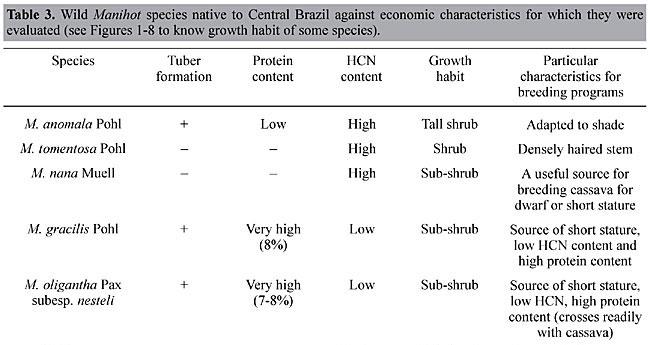 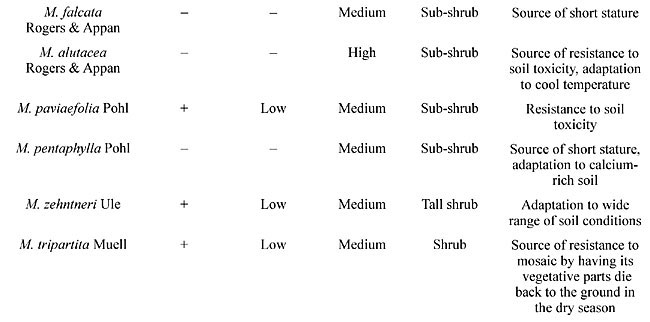  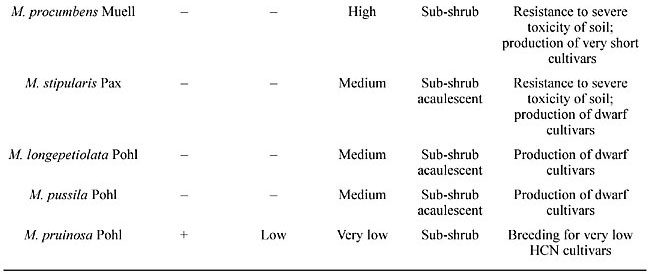
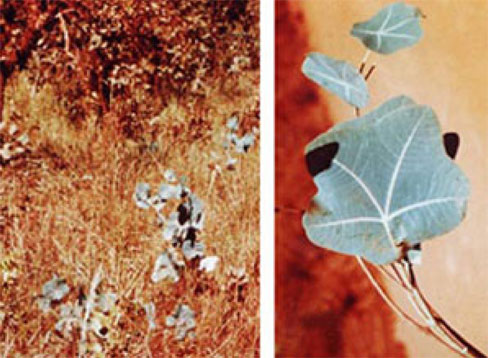 Figure 2. Manihot peltata. Figure 2. Manihot peltata.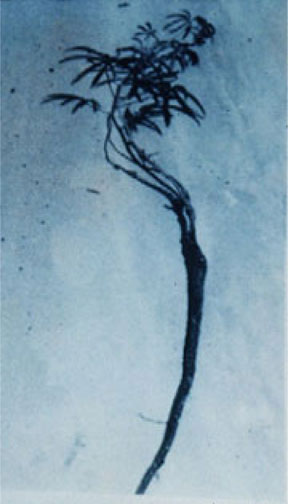 Figure 3. Manihot falcata. Figure 3. Manihot falcata.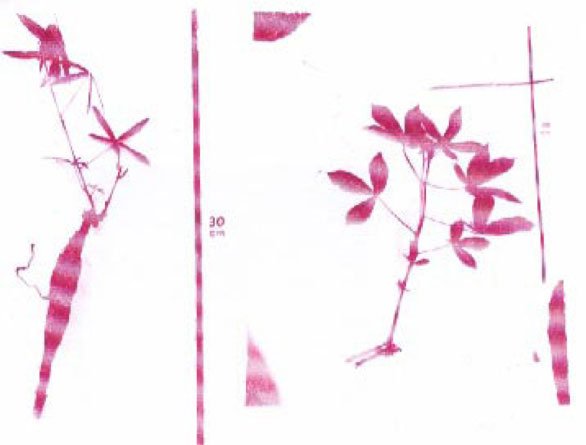 Figure 4. Manihot paviaefolia.  Figure 5. Manihot procumbens. 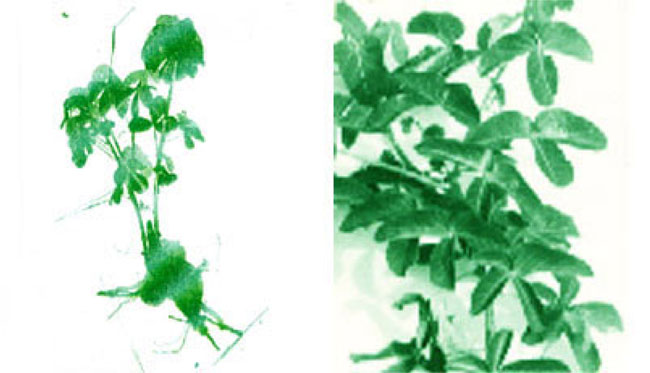 Figure 6. Manihot pruinosa. 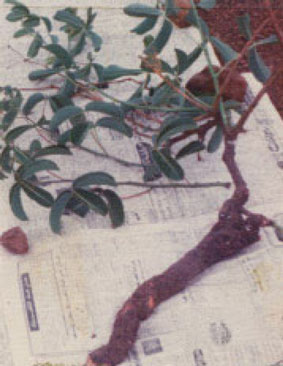 Figure 7. Manihot reptans. Figure 7. Manihot reptans.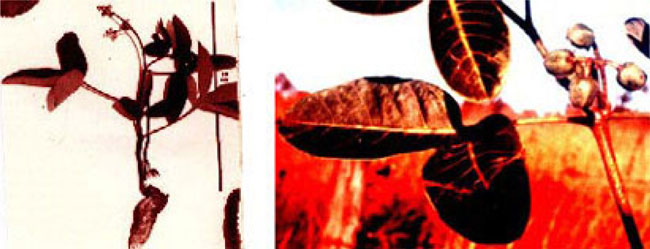 Figure 8. Manihot alutacea. ACKNOWLEDGMENTS The author is grateful to the Canadian International Development Research Centre for support in collecting the Manihot species. REFERENCES Barbosa, A.S. (1975). Programa goiano de Arqueologia. Anuário de Divulgação. Universidade Católica de Goiás, Goiânia, GO, Brazil. Boletim 11, pp. 147. Black, C.A., Evans, E.D., White, J.L., Ensminger, L.E. and Clark, F.E. (1965). Methods of Soil Analysis. ASA, Madison, WI, USA, pp. 147. Harlan, J.R. (1951). Anatomy of gene centers. Am. Nat. 85: 97-103. Harlan, J.R. (1971). Agricultural origins: Centers and noncenters. Science 174: 468-474. Mueller, J.R. (1865). Euphorbiaceae. In: Martius Flora Brasiliensis. Verlag Von J. Cramer, Weinheim, Germany, Vol. 11. Part 2, pp. 437-486. Nassar, N.M.A. (1978a). Wild Manihot species of Central Brazil for cassava breeding. Can. J. Plant Sci. 58: 257-261. Nassar, N.M.A. (1978b). Some further species of Manihot with potential value to cassava breeding. Can. J. Plant Sci. 58: 915-916. Nassar, N.M.A. (1978c). Conservation of cassava genetic resources: Determination of wild species localities with emphasis on probable origin. Econ. Bot. 32: 311-320. Nassar, N.M.A. and Fitchner, S. (1978). Hydrocyanic acid content in some wild Manihot (Cassava) species. Can. J. Plant Sci. 58: 577-578. Rogers, D.J. and Appan, S.G. (1973). Manihot, Manihotoides. Flora Neotrópica. Monograph No. 13. Hafner, New York, NY, USA, pp. 272. Schmidt, C.B. (1951). A Mandioca, Contribuição para o Conhecimento de sua Origem. Boletim da Agricultura, São Paulo, SP, Brazil. No. único, pp. 56. Vavilov, N.I. (1951). The origin, variation, immunity and breeding of cultivated plants. Translated by K. Start. Chron. Bot. 13: 1-366. |
|
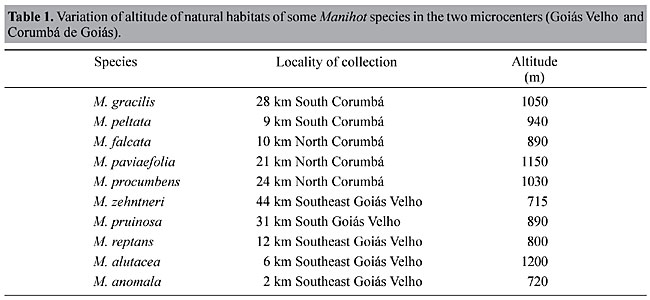
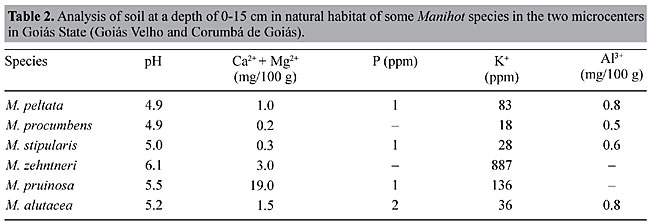
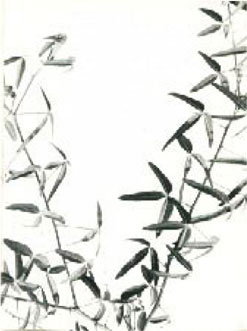 Figure 1. Manihot gracilis.
Figure 1. Manihot gracilis.